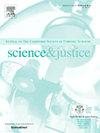Proteomics in forensics: from source attribution to reconstruction of events
IF 2
4区 医学
Q2 MEDICINE, LEGAL
引用次数: 0
Abstract
Proteomics has become an increasingly valuable tool in analytical sciences, including the field of forensic science. Initially introduced for body fluid identification, its applications have since expanded significantly. This literature review, spanning primarily over two decades (2004–2024), traces the steady evolution of proteomics within forensic science, with a particular focus on its potential for source attribution and event reconstruction. Here, we explore the potential of proteomics for what we refer to as “ultimate event reconstruction.” This reflects the dual role proteomics can play in forensic investigations, addressing early-stage questions related to source attribution, as well as later-stage questions concerning the reconstruction of events and timelines. To illustrate this potential, we highlight three case studies where proteomics has been successfully applied, while also briefly discussing the challenges encountered in implementing such a novel approach within a forensic framework. Additionally, we examine broader challenges that could hinder the adoption of proteomics in forensics, particularly those related to its relevance, complex data analysis, and the legal admissibility of proteomic evidence in court. We propose a set of guidelines aimed at preserving evidentiary integrity and supporting the responsible integration of proteomics into forensic practice. In conclusion, we emphasize that proteomics in forensic science should not be regarded as a standalone research discipline. Its true strength lies in how it can complement and integrate seamlessly with established disciplines such as genomics and toxicology to name a few, enhancing the depth and breadth of forensic trace analysis. Moreover, we highlight how proteomics can contribute to ultimate forensic reconstruction- not in isolation, but as part of a broader multimodal framework that integrates proteomics with techniques like DNA profiling, isotope analysis, and toxicological screening, to provide a more comprehensive understanding of forensic events.
法医学中的蛋白质组学:从来源归因到事件重建
蛋白质组学已经成为分析科学中越来越有价值的工具,包括法医学领域。最初引入体液鉴定,其应用已大大扩大。本文献综述主要跨越二十年(2004-2024),追溯了法医科学中蛋白质组学的稳定发展,特别关注其在来源归属和事件重建方面的潜力。在这里,我们探索蛋白质组学的潜力,我们称之为“最终事件重建”。这反映了蛋白质组学在法医调查中可以发挥的双重作用,解决与来源归属相关的早期问题,以及有关事件和时间线重建的后期问题。为了说明这一潜力,我们重点介绍了三个成功应用蛋白质组学的案例研究,同时也简要讨论了在法医框架内实施这种新方法所遇到的挑战。此外,我们还研究了可能阻碍在法医学中采用蛋白质组学的更广泛的挑战,特别是与蛋白质组学的相关性、复杂的数据分析和法庭上蛋白质组学证据的法律可采性有关的挑战。我们提出了一套指导方针,旨在保持证据的完整性,并支持负责任的蛋白质组学整合到法医实践。总之,我们强调,蛋白质组学在法医科学不应被视为一个独立的研究学科。它的真正优势在于如何与基因组学和毒理学等已建立的学科进行无缝补充和整合,从而增强法医痕迹分析的深度和广度。此外,我们强调蛋白质组学如何有助于最终的法医重建-不是孤立的,而是作为更广泛的多模式框架的一部分,将蛋白质组学与DNA分析,同位素分析和毒理学筛选等技术相结合,以提供对法医事件的更全面理解。
本文章由计算机程序翻译,如有差异,请以英文原文为准。
求助全文
约1分钟内获得全文
求助全文
来源期刊

Science & Justice
医学-病理学
CiteScore
4.20
自引率
15.80%
发文量
98
审稿时长
81 days
期刊介绍:
Science & Justice provides a forum to promote communication and publication of original articles, reviews and correspondence on subjects that spark debates within the Forensic Science Community and the criminal justice sector. The journal provides a medium whereby all aspects of applying science to legal proceedings can be debated and progressed. Science & Justice is published six times a year, and will be of interest primarily to practising forensic scientists and their colleagues in related fields. It is chiefly concerned with the publication of formal scientific papers, in keeping with its international learned status, but will not accept any article describing experimentation on animals which does not meet strict ethical standards.
Promote communication and informed debate within the Forensic Science Community and the criminal justice sector.
To promote the publication of learned and original research findings from all areas of the forensic sciences and by so doing to advance the profession.
To promote the publication of case based material by way of case reviews.
To promote the publication of conference proceedings which are of interest to the forensic science community.
To provide a medium whereby all aspects of applying science to legal proceedings can be debated and progressed.
To appeal to all those with an interest in the forensic sciences.
 求助内容:
求助内容: 应助结果提醒方式:
应助结果提醒方式:


